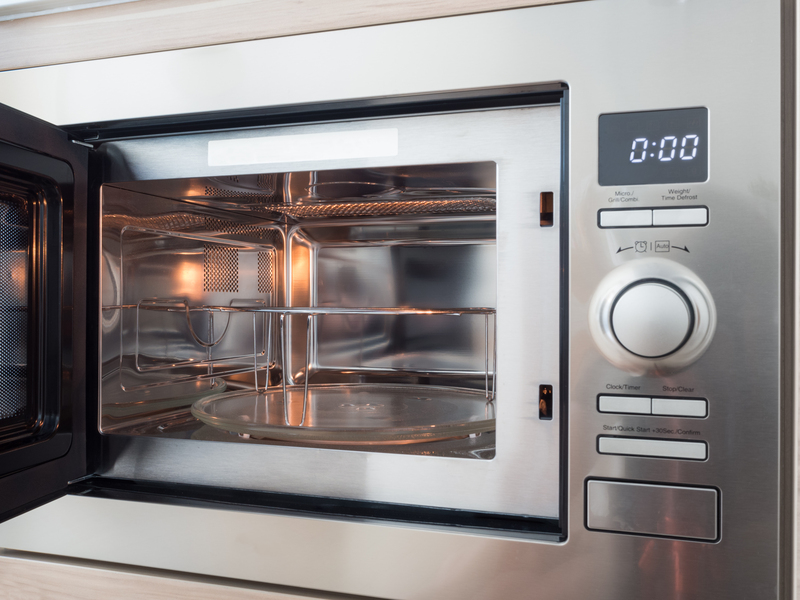Balancing Air Quality for Healthier Homes and Productive Workplaces
Posted on 11/09/2025
Balancing Air Quality for Healthier Homes and Productive Workplaces
Air quality plays a crucial role in our well-being, productivity, and overall health. Whether we are at home with our families or spending long hours at work, the need for clean, balanced air cannot be overstated. In recent years, there has been a growing awareness of the importance of balancing air quality for healthier homes and productive workplaces. In this comprehensive guide, we'll explore effective strategies, practical tips, and the science behind maintaining optimal air quality in our living and working environments.
Understanding the Need for Balanced Indoor Air Quality
When we talk about balancing air quality, we are referring to maintaining an indoor atmosphere that is free from contaminants while also ensuring proper humidity, ventilation, and temperature. Indoor air can often be more polluted than outdoor air due to factors such as poor ventilation, use of synthetic materials, and the presence of allergens or pathogens.
Key Sources of Indoor Air Pollution
- Mold and Mildew: Thrive in damp areas, releasing spores that can cause allergies and respiratory problems.
- Dust Mites and Allergens: Accumulate in upholstery, bedding, and carpets, triggering allergies and asthma.
- Volatile Organic Compounds (VOCs): Emitted by household products, paints, and office equipment, VOCs can irritate the eyes, nose, and throat.
- Pet Dander: Fine particles shed from animal skin and hair can trigger allergic reactions.
- Soot and Particulate Matter: Generated by fireplaces, stoves, and outdoor pollution infiltration.
These pollutants, when left unchecked, negatively impact our health, cognitive function, and well-being. Thus, balancing air quality is vital for both our homes and productive workplaces.

Why Balancing Air Quality Matters: Health and Productivity Impacts
The consequences of poor indoor air go beyond mere discomfort. Balanced indoor air quality is essential to preventing:
- Respiratory Issues: Such as asthma, bronchitis, and allergies.
- Headaches and Fatigue: Poorly ventilated spaces can lead to headaches, dizziness, and tiredness.
- Reduced Focus and Productivity: Studies have shown a direct correlation between air quality and cognitive performance.
- Mood Disorders: Poor air can contribute to irritability, anxiety, and even depression.
- Long-Term Diseases: Chronic exposure can increase the risk of cardiovascular and respiratory diseases.
Scientific Evidence Linking Air Quality to Well-being
Research from the Harvard T.H. Chan School of Public Health highlights a direct link between indoor air quality and workers' performance. High levels of CO2 and pollutants are correlated with decreased decision-making ability and increased symptoms of sick building syndrome. Furthermore, children exposed to poor air conditions at home are more likely to develop asthma and learning challenges.
Core Elements of Balanced Air Quality
To achieve proper air quality balance in homes and offices, consider these primary components:
- Ventilation: Adequate exchange of indoor and outdoor air reduces pollutants and controls humidity.
- Filtration: Use of air filters to capture dust, allergens, and microorganisms.
- Humidity Control: Maintaining relative humidity between 30% to 50% for comfort and to inhibit mold and mite growth.
- Source Control: Limiting the introduction of contaminants via products, building materials, and occupants' behavior.
- Monitoring: Regularly measuring air quality components (e.g., CO2, PM2.5, VOCs, humidity).
Strategies to Balance Air Quality at Home
Creating a healthier home environment requires conscious effort. Here are practical steps for optimal indoor air:
1. Enhance Natural Ventilation
- Open windows and doors for several minutes daily to allow fresh air exchange.
- Utilize exhaust fans in bathrooms, kitchens, and laundry areas to expel moisture and pollutants.
- Consider cross-ventilation by opening windows on opposite sides of rooms for better airflow.
2. Use Effective Air Filtration
- Install HEPA filters in HVAC systems or use standalone air purifiers, especially in bedrooms and living areas.
- Change filters regularly, typically every 3-6 months or as specified by the manufacturer.
- Clean air ducts periodically to prevent dust accumulation and mold growth.
3. Manage Indoor Moisture and Humidity
- Keep home humidity levels between 30% and 50% to deter mold, dust mites, and bacteria.
- Use dehumidifiers in damp spaces like basements and bathrooms.
- Fix water leaks promptly and ensure all plumbing is in good condition.
4. Minimize Chemical Pollutants
- Opt for low-VOC paints and eco-friendly cleaning products.
- Store chemicals, paints, and pesticides outside living areas or in airtight containers.
- Avoid unnecessary use of air fresheners or scented candles, which can emit VOCs.
5. Control Allergens and Particulate Matter
- Vacuum and dust regularly using HEPA-filtered vacuums.
- Reduce clutter that can trap dust, and wash bedding frequently in hot water.
- Maintain hard flooring when possible as it collects less dust compared to carpets.
Techniques for Optimizing Air Quality in Workplaces
For employers and facility managers, balancing air quality for productive workplaces offers a competitive edge. Here's how:
1. Invest in Advanced Ventilation Systems
- Implement mechanical ventilation systems that maintain adequate fresh air exchange regardless of outdoor conditions.
- Check that HVAC systems are well-maintained and equipped with high-grade filters.
- Install CO2 and VOC sensors in meeting rooms and high-occupancy spaces to monitor air quality real-time.
2. Regulate Humidity Levels
- Use humidifiers or dehumidifiers as needed to keep relative humidity within recommended range.
- Monitor for condensation on windows, which indicates excess humidity.
- Control humidity in server rooms and storage areas to protect both employees and equipment.
3. Promote a Clean and Green Work Environment
- Introduce indoor plants that help absorb certain pollutants and improve oxygen levels.
- Encourage regular cleaning of workstations and communal areas using low-emission cleaning agents.
- Discourage smoking indoors and designate outdoor, well-ventilated smoking areas.
4. Encourage Smart Occupant Behavior
- Educate employees about practices that maintain balanced air, such as keeping vents unobstructed and reporting leaks promptly.
- Provide guidelines on the use of workplace chemicals and personal care products.
- Allow for flexible working hours to minimize overcrowding, thereby enhancing air exchange rates.
Top Technologies and Tools for Balancing Air Quality
Emerging technologies can make balancing indoor air easier and more efficient:
- Smart Air Quality Monitors: These devices detect particles, chemicals, humidity, and temperature, and provide real-time notifications for intervention.
- Automated Ventilation Systems: Advanced systems that adjust airflow based on CO2 and pollutant levels.
- UV-C Air Sanitizers: Use ultraviolet light to destroy bacteria, viruses, and molds in air handling systems.
- Energy Recovery Ventilators (ERVs): Exchange stale indoor air with fresh outdoor air while retaining heat or cooling, improving both air quality and energy efficiency.
- HEPA and Activated Carbon Filters: Capture fine particles, allergens, and gaseous pollutants.
Practical Tips for Sustaining Healthy Air Quality
For Homes
- Regularly inspect and maintain ventilation and filtration equipment.
- Limit indoor use of candles, wood-burning fires, and incense.
- Encourage a no-shoe policy to prevent tracking pollutants indoors.
- Don't overwater houseplants, as damp soil can harbor mold.
For Workplaces
- Schedule routine cleaning and maintenance of HVAC and air treatment systems.
- Implement periodic air quality testing using professional-grade instruments.
- Provide training for janitorial and maintenance staff on safe cleaning practices.
- Foster a culture of safety and cleanliness among all employees.
The Role of Regulation and Standards in Air Quality Balance
Indoor air quality standards are established by organizations like the EPA, ASHRAE, and OSHA to ensure safety and health in homes and workplaces. Adhering to these standards is critical:
- ASHRAE 62.1: Sets minimum ventilation requirements for commercial and institutional buildings.
- EPA Indoor Air Quality Tools: Provide guidance for schools and public buildings.
- OSHA Regulations: Offer occupational guidelines for exposure to hazardous substances and indoor air pollutants.
Regular compliance checks not only protect health but also shield organizations from legal and financial repercussions.
Benefits of Balanced Air Quality
- Enhanced Health: Fewer allergies, asthma attacks, and respiratory problems.
- Improved Productivity: Better focus, decision-making, and overall work performance.
- Boosted Morale: People feel more comfortable and energized in spaces with balanced air.
- Reduced Absenteeism: Healthy environments help prevent sick days and increase attendance.
- Long-term Cost Savings: Preventive measures and maintenance are more affordable than addressing health crises or extensive contamination.

Common Myths about Indoor Air Quality
Myth 1: "Indoor air is always cleaner than outdoor air."
In fact, indoor spaces can accumulate higher concentrations of certain pollutants, especially with poor ventilation.
Myth 2: "Air fresheners improve air quality."
Most fresheners only mask odors and often contain VOCs, which degrade air quality further.
Myth 3: "Only allergy sufferers need to worry about air quality."
Good air benefits everyone by supporting immune health, concentration, and energy levels.
Conclusion: Creating a Balanced Atmosphere for Optimal Living and Working
Balancing air quality for healthier homes and productive workplaces is a cornerstone for a vibrant, thriving life. While outdoor air is subject to environmental regulations, indoor air quality is well within our control. By employing the right strategies--from ventilation and humidity control to the use of smart technology--we can ensure cleaner, safer, and more invigorating environments for ourselves and those around us.
Ultimately, a balanced air environment is not just a luxury, but an essential investment in our physical health, mental clarity, and productivity. Make air quality a priority in your daily routine, and you'll reap the benefits for years to come.





